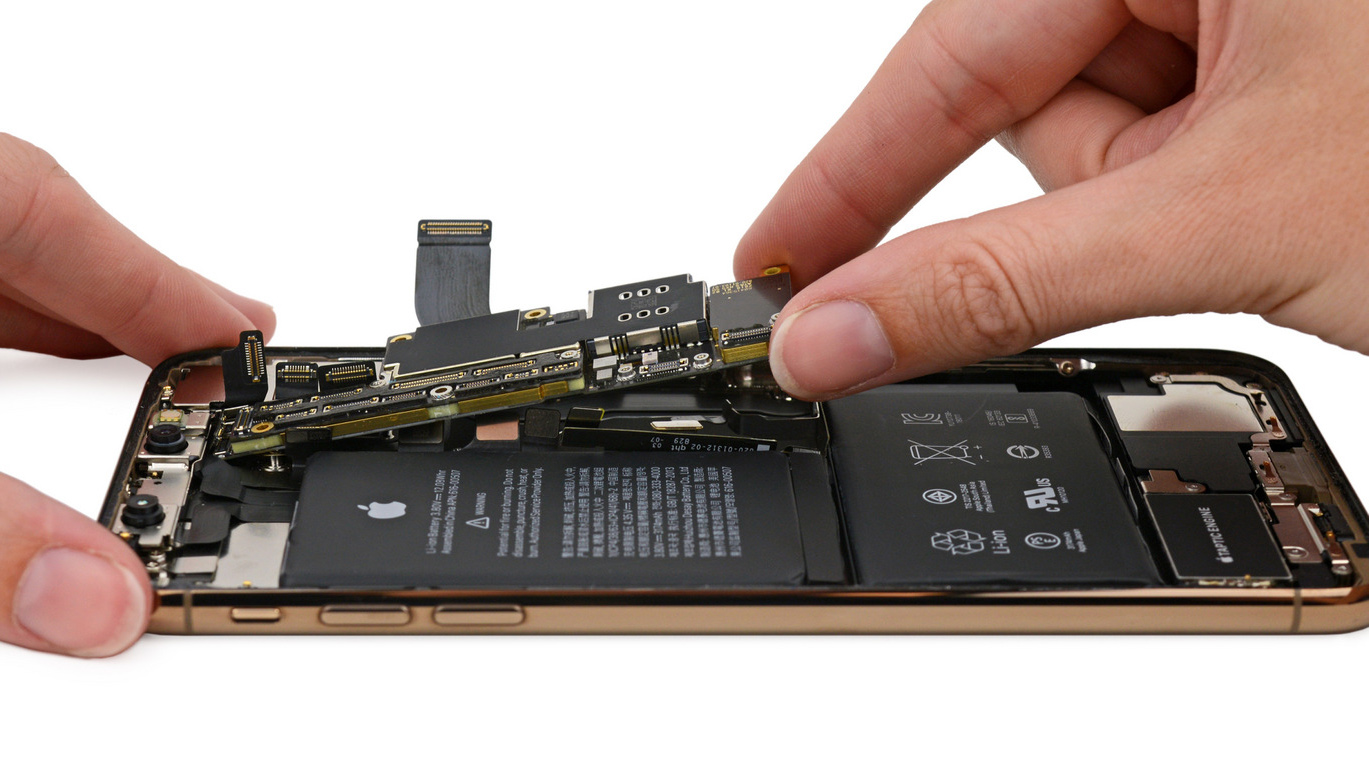iPhone XS teardown reveals not much has changed inside... except the battery
Many components have been carried over from the iPhone X

If you’ve been wondering just how different the iPhone XS is from last year’s iPhone X, wonder no longer. Apple's fancy new smartphone and its bigger sibling, the iPhone XS Max, have been pried open by iFixit, and surprise, not much has changed – except for the new A12 chipset and a reshaped battery.
Yes, the pair of batteries in last year’s iPhone X have been merged into a peculiar L-shaped single unit in the iPhone XS, which is fitting given Apple’s tradition of designing its own custom batteries to fill the most internal space possible. Curiously, the new model’s battery is 2,659 mAh capacity, compared to the iPhone X battery’s 2,716 mAh.
Apple still claims that the iPhone XS still manages to get 30 minutes more battery life than the iPhone X. The iPhone XS Max, however, retains the dual-battery design and has more capacity to boot with a combined 3,179 mAh, which Apple claims gets an hour and a half more battery life than the iPhone X.
The other glaring difference is the new A12 Bionic processor, which is Apple’s first 7nm chip. It's enough to outperform the recently-released Samsung Galaxy S9 (though the iPhone X A11 Bionic chip was faster, too – this one's just even faster than that).
With eight cores in the A12’s neural processing unit (over its predecessor’s two), the iPhone XS is theoretically capable of 5 trillion operations per second compared to the iPhone X’s 600 billion operations per second, Apple claims.
Another new component is the embedded SIM (eSIM), an ST Microelectronics ST33G1M2 32 bit MCU. It's the first eSIM in an iPhone, but interestingly the same as the one found in the Apple Watch 3, iFixit pointed out. No one has done an Apple Watch 4 teardown yet, but this same eSIM could be in there, too.

Not much new hardware
Everything else in the iPhone XS is mostly the same as the iPhone X, at least in its internals. The new model’s screen has the same dimensions and resolution (5.8-inch, 458 ppi) as last year’s model, though it’s unclear if there’s any hardware difference to achieve the oft-cited 60% greater dynamic range in HDR photos.
Sign up for breaking news, reviews, opinion, top tech deals, and more.
That might be explained by the 32% larger wide-angle sensor in the rear camera suite, which has increased the housing just slightly enough to perhaps require buying an iPhone XS-specific case. Pixel size has increased, which should bring better low-light performance and help the ‘Smart HDR’ feature, according to iFixit.
Otherwise, the cameras have largely remained the same, with dual-lens 12MP rear cameras at f/1.8 and f/2.4 apertures, and a 7MP TrueDepth front-facing camera with f/2.2 aperture.
The other changes are less dramatic – for example, Apple switched from Intel and Qualcomm modems in the iPhone X to only Intel modems in the iPhone XS.
And before you ask, the iFixit team didn’t find any greater adhesive or other waterproofing to easily explain what got the iPhone XS up to the IP68 water and dust resistance rating (up from the iPhone X’s IP67 rating). We're guessing Apple just did make testing to confidently say it would survive 2m (6.5ft) under water for 30 mins.
Lead Photo Credit: iFixit

David is now a mobile reporter at Cnet. Formerly Mobile Editor, US for TechRadar, he covered phones, tablets, and wearables. He still thinks the iPhone 4 is the best-looking smartphone ever made. He's most interested in technology, gaming and culture – and where they overlap and change our lives. His current beat explores how our on-the-go existence is affected by new gadgets, carrier coverage expansions, and corporate strategy shifts.